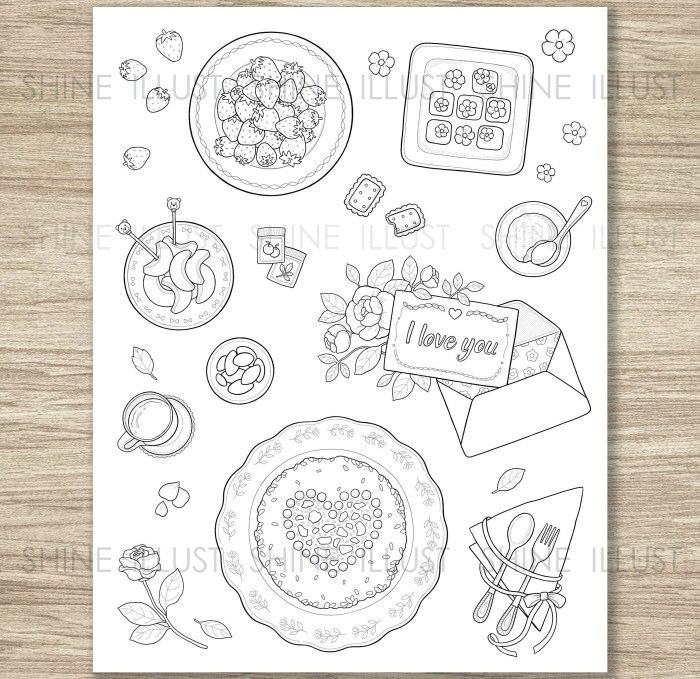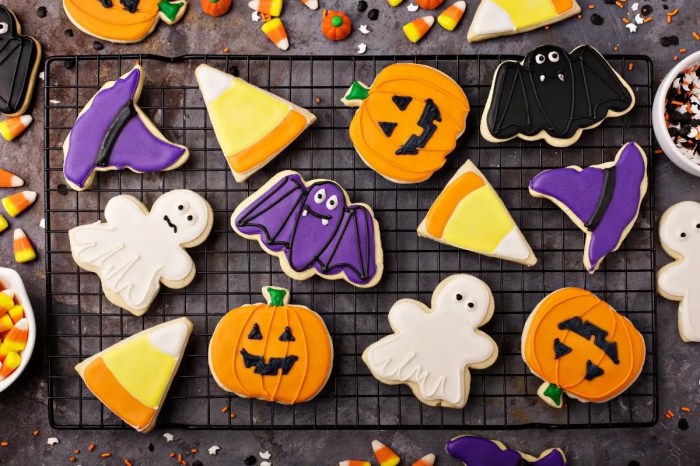Brand Recommendations and Reviews: Best Food Coloring For Cookie Decorating

Best food coloring for cookie decorating – Choosing the right food coloring can significantly impact the vibrancy and overall look of your cookie decorations. The market offers a wide variety, so understanding the strengths and weaknesses of different brands is crucial for achieving professional-looking results. This section provides an overview of some reputable brands and their suitability for cookie decorating.
Reputable Food Coloring Brands for Cookie Decorating
Several brands consistently receive positive feedback from bakers for their quality, vibrant colors, and ease of use in cookie decorating. These brands generally offer a range of color options, from basic primary colors to more specialized shades. They also often cater to different needs, offering gel, liquid, or powder options. Careful consideration of these factors will help you select the best brand for your specific decorating style and preferences.
| Brand Name | Type of Coloring Offered | Price Range | User Reviews Summary |
|---|---|---|---|
| Americolor | Gel, Powder | $$ | Highly praised for intense, vibrant colors and excellent consistency. Users appreciate the ease of blending and the lack of bleeding into icing. A slightly higher price point reflects the superior quality. Some users find the gels a bit thick. |
| Wilton | Gel, Liquid, Powder | $ | A widely available and popular brand, offering a good balance of price and quality. Colors are generally vibrant, but may not be as intense as some higher-end brands. Liquid colors can be more prone to bleeding than gels. A good entry-level option. |
| Rainbow Dust | Powder, Edible Luster Dusts | $$$ | Known for its exceptionally vibrant and highly pigmented powder colors. Excellent for achieving metallic or pearlescent effects with its luster dusts. Pricier than other brands, but the intense color payoff and unique effects justify the cost for many decorators. Requires careful handling due to the fine powder consistency. |
Achieving Specific Colors and Effects

Cookie decorating offers a fantastic canvas for creativity, and mastering color mixing is key to unlocking its full potential. This section explores techniques for achieving a wide range of colors and special effects using food coloring, ensuring your cookies look as delicious as they taste.Mixing food colorings allows for a virtually limitless palette. Understanding the primary colors—red, yellow, and blue—is crucial.
By combining these in various proportions, you can create a huge variety of secondary and tertiary colors. For instance, red and yellow make orange, red and blue make purple, and yellow and blue make green. Adding white creates pastels, while adding black deepens the shade. Experimentation is key!
Creating Custom Shades and Hues, Best food coloring for cookie decorating
Precise color matching requires a methodical approach. Start with a small amount of base color (e.g., a pale yellow for a buttercup yellow). Gradually add small amounts of a secondary color, mixing thoroughly after each addition. A toothpick or the tip of a clean knife is ideal for precise color control. For example, adding a tiny amount of red to yellow will shift the hue toward orange.
Similarly, adding a touch of blue to yellow will create a chartreuse green. Remember to test your mix on a small, unimportant area before applying it to the main design.
Creating Pastel Colors
Pastel shades are delicate and beautiful on cookies. The easiest way to achieve them is by adding white to a base color. Start with your desired base color and gradually incorporate white food coloring until the desired pastel shade is reached. The ratio of white to color will vary depending on the intensity of your base color and the desired pastel shade.
For example, a vibrant red will require more white to achieve a pale pink than a less intense red would. Remember to mix thoroughly to avoid streaking.
Creating Metallic or Iridescent Effects
Metallic and iridescent effects add a touch of glamour to cookie decorating. These effects are not achieved solely with food coloring but through the use of edible luster dusts. These are finely milled powders that are applied to a wet icing or fondant surface. Once the dust is applied, gently buff the surface to create a smooth, even finish.
The luster dust will adhere to the wet surface and create a beautiful shimmer. Many different shades of luster dust are available, from gold and silver to more vibrant hues like copper or rose gold. Remember to always use edible luster dusts to ensure food safety.
Achieving Different Color Intensities
The intensity of your color is directly related to the amount of food coloring used. A small amount of food coloring will produce a pale, delicate color, while a larger amount will create a vibrant, intense color. Start with a small amount of food coloring and gradually add more until the desired intensity is achieved. It’s always easier to add more color than to take it away.
Achieving vibrant hues in your cookie decorating requires the right tools. For intensely saturated colors with a naturally beautiful finish, consider using gel food colorings. Many bakers prefer options free of artificial ingredients, and you can find excellent choices by exploring sources like food coloring no artificial dyes to ensure a healthy and delicious treat. This careful selection guarantees your cookies not only look stunning but also taste fantastic.
Keep in mind that different brands of food coloring may have varying levels of intensity, so be prepared to adjust the amount needed depending on the brand you are using. Using gel food colorings allows for greater color control and concentration compared to liquid food colorings.
Working with Food Coloring

Mastering food coloring is key to creating stunning cookie designs. Understanding how to prevent bleeding, achieve precise details, and properly store your colors will significantly elevate your cookie decorating game. This section provides practical tips and techniques to help you achieve professional-looking results.
Preventing Bleeding and Separation in Icing
Using the right consistency of icing is paramount to preventing bleeding. Too thin an icing will spread uncontrollably, leading to blurry colors. Conversely, icing that’s too thick can create a crumbly texture and make it difficult to achieve smooth, even coloring. Aim for a medium-firm consistency that holds its shape but still allows for easy spreading. Additionally, gently incorporating the food coloring, avoiding vigorous mixing, minimizes air bubbles that can cause separation.
Using a high-quality gel food coloring, known for its intense pigment and minimal water content, helps prevent excessive thinning of the icing.
Achieving Clean Lines and Precise Details
Precise decorating requires the right tools and techniques. Using fine-tipped piping bags or bottles allows for delicate lines and intricate designs. Practice creating consistent pressure on the piping bag to ensure even lines and prevent variations in thickness. For intricate details, consider using a scribe tool or toothpick to create finer points and remove excess icing. Stencils can also be incredibly helpful for creating clean shapes and patterns.
Imagine a stencil with a flower design; by carefully applying icing over the stencil, a crisp, clean flower is easily created.
Proper Food Coloring Storage
Proper storage extends the lifespan of your food coloring and maintains its vibrancy. Gel food colorings, when stored in airtight containers in a cool, dark place, can last for months, even years. Liquid food colorings, however, are more susceptible to degradation and should be stored similarly but used more promptly. Avoid storing food coloring near heat sources or direct sunlight, which can cause fading and alter their consistency.
Keeping them in a tightly sealed container prevents evaporation and preserves the original consistency and pigment.
Adding Food Coloring to Icing: A Step-by-Step Guide
This guide demonstrates adding gel food coloring to royal icing. The process is similar for other icings, adjusting the amount of coloring based on the desired intensity.
- Prepare your icing: Begin with a small batch of prepared royal icing, ensuring it’s at the right consistency (medium-firm). Imagine a smooth, creamy texture that holds its shape but is still easily spreadable.
- Add coloring gradually: Start by adding a tiny amount of gel food coloring to a portion of the icing. A toothpick or a small offset spatula is ideal for this. Imagine using the tip of a toothpick to add a tiny dot of red coloring to a tablespoon of white icing.
- Mix thoroughly but gently: Use a spatula or clean spoon to carefully fold the color into the icing. Avoid vigorous mixing, which can incorporate air bubbles and lead to separation. Imagine a gentle folding motion, incorporating the color evenly without creating a lot of air.
- Assess the color: Check the color against your desired shade. Add more coloring gradually, mixing thoroughly after each addition, until you reach your desired intensity. Imagine comparing the color of your icing to a color swatch to ensure it matches your vision.
- Repeat for other colors: Repeat steps 2-4 for each color you need. If creating multiple colors, prepare separate batches of icing to avoid accidental mixing. Imagine having three separate bowls of icing, each with a different color—red, blue, and yellow—ready for your cookie decorating project.
FAQ Compilation
Can I use food coloring past its expiration date?
While it might still work, using expired food coloring can result in inconsistent colors or a change in texture. It’s best to use fresh coloring for optimal results.
How do I clean up food coloring spills?
Act quickly! Most food colorings are water-soluble, so blot the spill immediately with a damp cloth. For stubborn stains, try a mild detergent.
Are all food colorings vegan/gluten-free?
Always check the label! Many are, but some may contain animal-derived ingredients or gluten cross-contamination. Look for certifications to ensure they meet your dietary needs.
How long does food coloring last once opened?
This varies depending on the type and brand, but generally, unopened food coloring has a longer shelf life than opened. Proper storage (airtight container, cool, dark place) is key to extending its lifespan.
